When it comes to ecommerce, pricing your products can make or break your success.
A lot of store owners think they can just add a small margin to their costs and call it a day.
But seasoned ecommerce pros know that pricing is a powerful tool, not just a number on a tag.
It affects how customers see your brand, how much you sell, and how fast you grow.
Once you decide what to sell, pricing determines where your product sits in the market. It’s not just about being affordable or turning a huge profit. It’s about sending the right signal.
Take Rolex, for example.
It costs them less than $1,000 to manufacture a watch. But that same watch can sell for $5,000 or more.
Why? Because people aren’t just buying glass, gears, and metal. They’re buying status, exclusivity, and the feeling of owning a Rolex.
That’s the power of strategic pricing.
In this guide, we’ll break down the essentials of ecommerce pricing strategy, from calculating your costs to testing your price points and choosing a model that fits your brand.
By the end, you’ll know exactly how to price your products in a way that protects your margins, attracts your ideal customers, and positions your store for long-term growth.
How to Calculate Your Ecommerce Product Costs
Every price needs to cover your costs at a minimum.
You need to make money, and your customers want the best deals. With the right blend of pricing, everyone can win.
Whatever prices you decide on, will have a direct impact on how many people choose to do business with you.
This is known as cost-based pricing, where you calculate the costs required to sell your product.
While pricing based solely on cost usually isn’t as profitable as other methods (which we’ll discuss in a minute), you need to understand your costs to make money.
There are four major areas to consider when adjusting your pricing.
1. Product Costs: Raw Materials and Packaging
No matter how you source your products, you must ensure that you calculate the costs of the raw materials that you are going to use.
Clothing eCommerce store Everlane uses radical transparency to show the true cost of their product and pricing. You can see exactly how much they are—or are not—making.
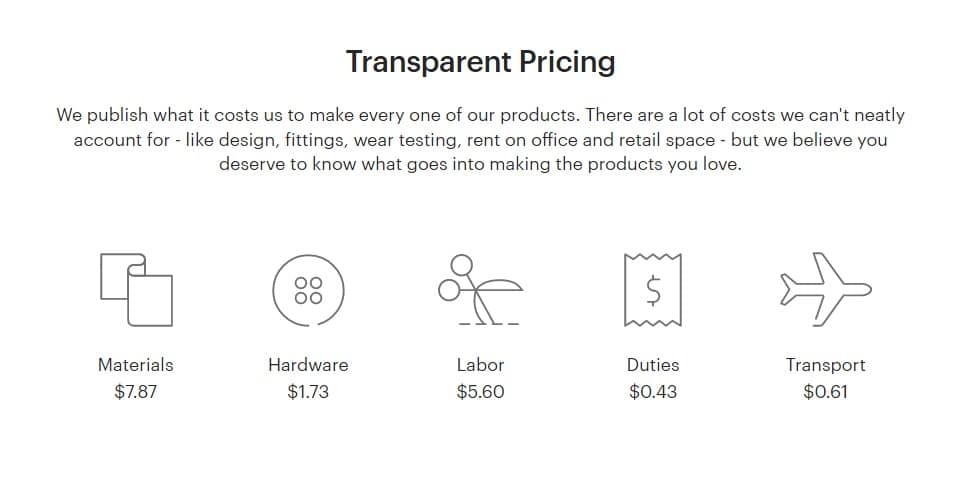
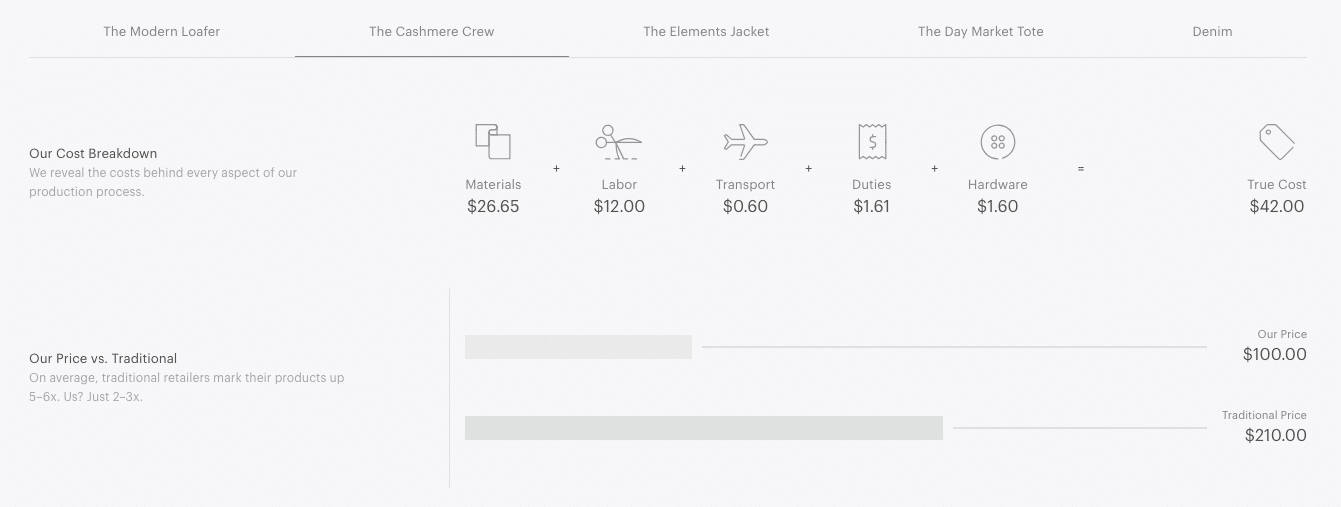

For example, if you are trying to price a pepperoni pizza, natural elements are required for it to be a full product. In this case, it would be important to consider the costs of ingredients including flour, yeast, water, cheese, and pepperoni.
When you take all the costs of these ingredients into account, you will have a better reflection of all true price. For you to price the pizza, the cost of making it must be factored into the equation.
But raw materials aren’t the only factor to consider. You’ll also need to include the cost of packaging, supplementary materials like chargers or manuals, and everything that goes in the box.
2. Marketing Costs: Ads, SEO, and Customer Acquisition
This is one of the most critical factors to consider with any online business.
Customers need to know about your site in order to buy things from you. You’ll need a lot of marketing to make your business succeed, especially when you’re just getting started.
Plus, your pricing can actually play into your marketing. A high price indicates a quality product, and your marketing should reflect that. Pricing is mental shortcut many customers use to determine the value of your product.
Understand your eCommerce store goals, and price according to those goals.
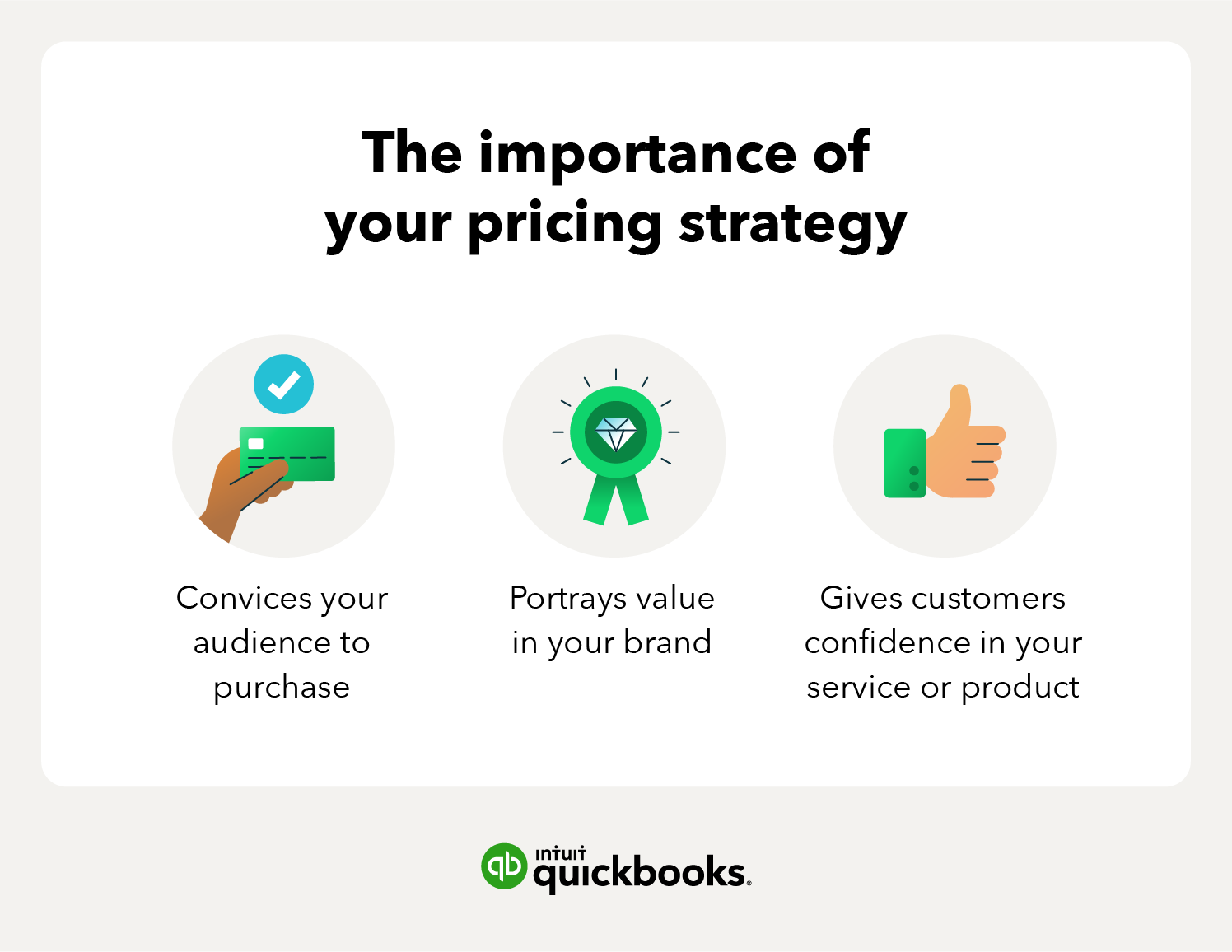
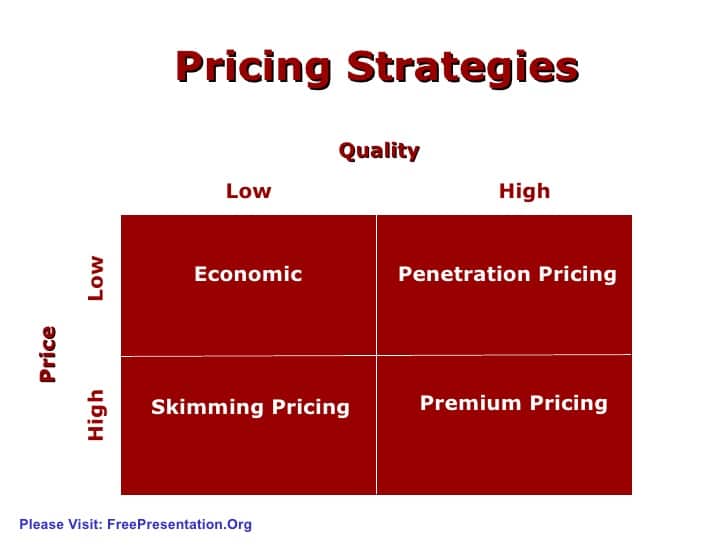

When you are marketing your products, you’ll definitely incur costs for customer acquisition.
Cost of acquisition is something that may not seem straightforward at first. If you are still trying to figure out the best marketing strategies, it may take time to really know how much it costs to get a sale in your business.
At first, it may seem like costs of acquisition are very high, especially if you try a lot of strategies to make your first sale before succeeding.
In order for your marketing strategy to be effective, you will first need to try out a lot of different methods.
Let’s break down the main types of marketing expenses to account for:
- Paid ads: Whether you’re running Google Shopping campaigns or Instagram ads, these costs can add up quickly.
- Email marketing: Tools like Klaviyo or Mailchimp charge monthly fees, plus time spent writing and designing campaigns.
- Influencer partnerships or affiliate programs: These often involve flat fees or commissions.
- SEO for ecommerce: If you’re investing in SEO services, whether you handle it in-house or hire an expert like myself, those costs pay off long-term. Ranking for high-intent search terms like best running shoes for flat feet or custom leather wallets can drive traffic and sales without ongoing ad spend.
After carefully analyzing which are effective, you can establish a cohesive marketing and business plan for your eCommerce store.
There are a few easy ways that you can figure out which marketing strategies are working.
- First, list out everything that you are trying. This can include taking time to grow social media, run advertisements, build your email list, and other systems.
- Create a timeline for when these activities will be measured, and collect periodic results.
- After a certain period of time (whether that is a few weeks or months) identify where your sales are coming from, and focus on those strategies.
Once you have some initial data points, you can figure out how much return on investment (ROI) is possible.
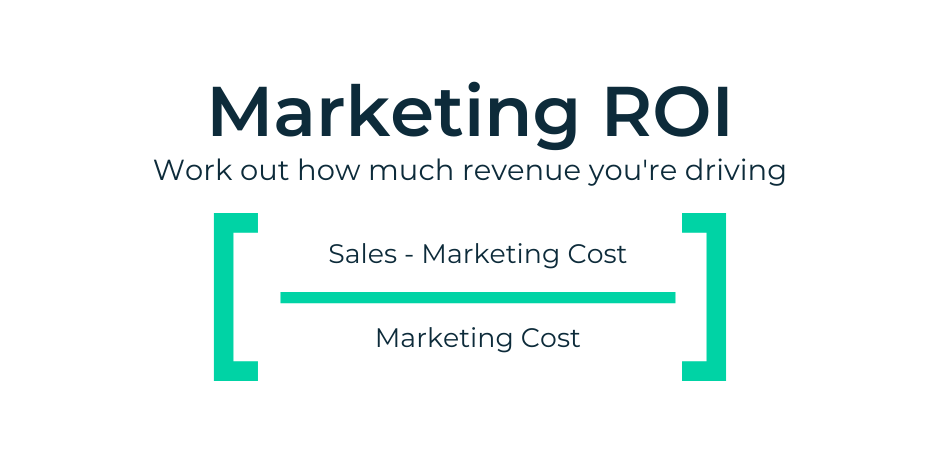
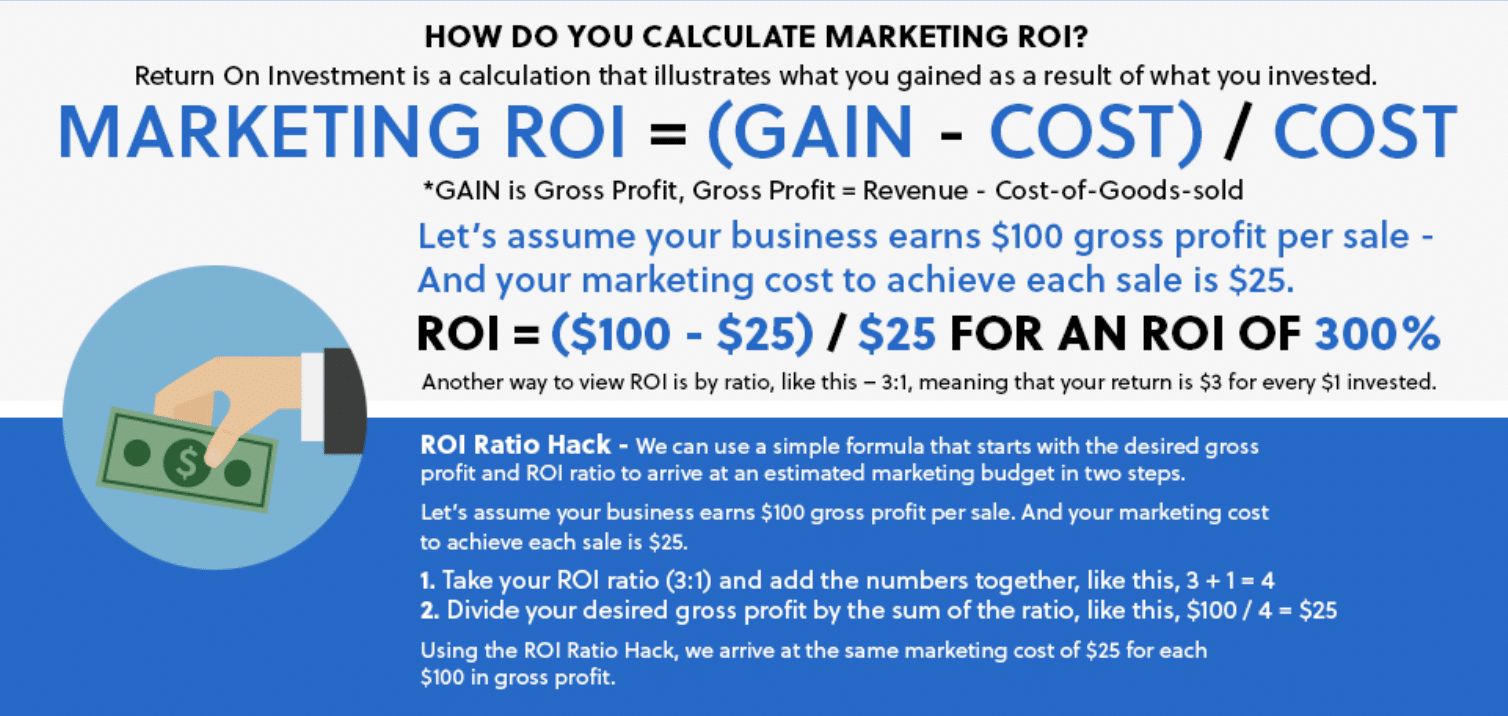

This formula explains how your gain plays into the overall ROI. Marketing can take time, and finding strategies that affect your target audience could be costly at first
Once you have the right things in place, your ROI will increase and it will be clear how much of an investment is needed to bring customers to your eCommerce shop.
Include this cost (plus a buffer amount) from the price of your products.
3. Delivery and Shipping Costs: The Hidden Costs That Hurt Your Margins
Shipping is one of the most underestimated costs in ecommerce, and it adds up fast!
When you are delivering products to your customers, shipping or other methods will come into play.
Having the most cost-effective and reliable means of transportation is essential to pricing. If your shipping costs are higher than competitors, your conversion rate will take a hit, so it’s smart to benchmark against what others in your niche charge.
Delivery and shipping charges can also include packaging costs and tariffs or other taxes.
Shipping and handling costs are the #1 reason for cart abandonment, with 48% of abandon carts because of unexpected shipping costs, making it the #1 reason for lost sales!
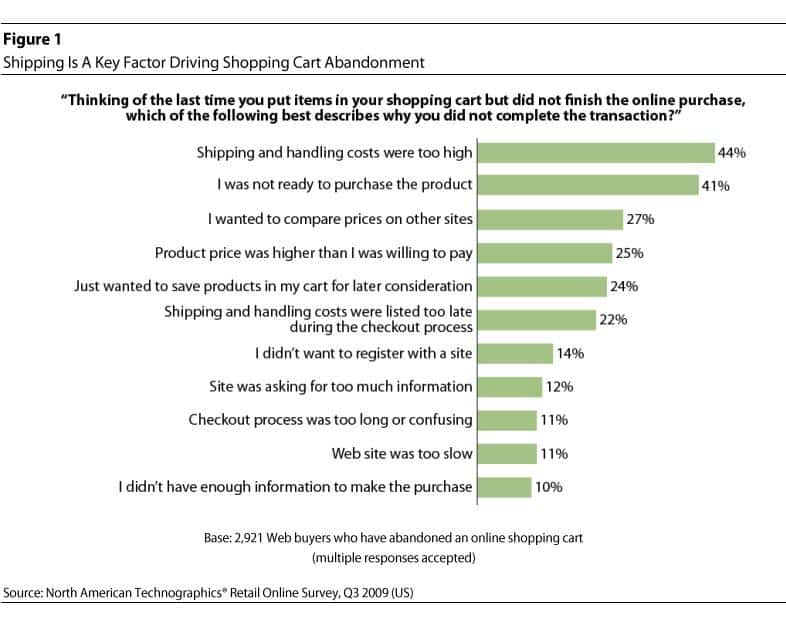

Because customers usually prefer “free” shipping to an added charge, include shipping costs in your product price, then offer free shipping.
Include this when you calculate the price of your products.
Team, Tools, and Overhead: Don’t Forget These Costs
As you build up your eCommerce store, it’s easy to overlook the behind-the-scenes costs that keep things running.
With so much going as you start , having a supportive team is critical. This means that you might have some personnel that helps you in your normal daily activities of managing the store.
You may need team members helping with customer service, fulfillment, or content, and all of that adds to your overhead.
And don’t forget to pay yourself. Even in the early days, it’s smart to build a salary buffer into your pricing.
While your store might skyrocket with massive profits, it’s a good idea to have a base number built in that you can pay yourself from each product.
That way, you’ll be able to support yourself in lean times just as well as when your product is booming.
These costs might seem small individually, like a Shopify subscription, Canva account, or customer support tool, but they add up fast.
Pricing without factoring in your overhead can leave you with paper-thin margins, even if your sales look strong on paper.
Competitive Pricing Strategies: Where Do You Fit In?
Competitive pricing models will help you carve out a place in your niche.
Whether your price high or low depends on what the market currently looks like, and that’s determined by your competition.


There are three types of competitive pricing.
Below competition
You’re pricing lower than your competitors to gain traction and stand out. It’s a common approach for new stores. It is a great way to go when starting out with your e-commerce businesses.
By doing this, you are setting yourself up to be one of the most affordable vendors for your niche.
One of the main advantages of this pricing model is the ability to stand out in the industry. A lot of retailers work on this model, including Amazon and Walmart.
The downside? It’s tough to stay profitable long-term unless you have ultra-low costs or high volume. This may make it hard to stay afloat in a competitive pool.
Another disadvantage with this model is staking everything on price. If that’s your only differentiating factor, and someone else undercuts you—you’ve given them your market share.
With competition
If you have a clear difference in what you sell, this can work. When you price around the competition, you don’t lose many customers based on how much you charge.
Let’s take a simple example of the number of sweater sales you lose at different prices.
(Of course, you’ll have to imagine what that graph looks like for your product, since the data is hard to come by.)
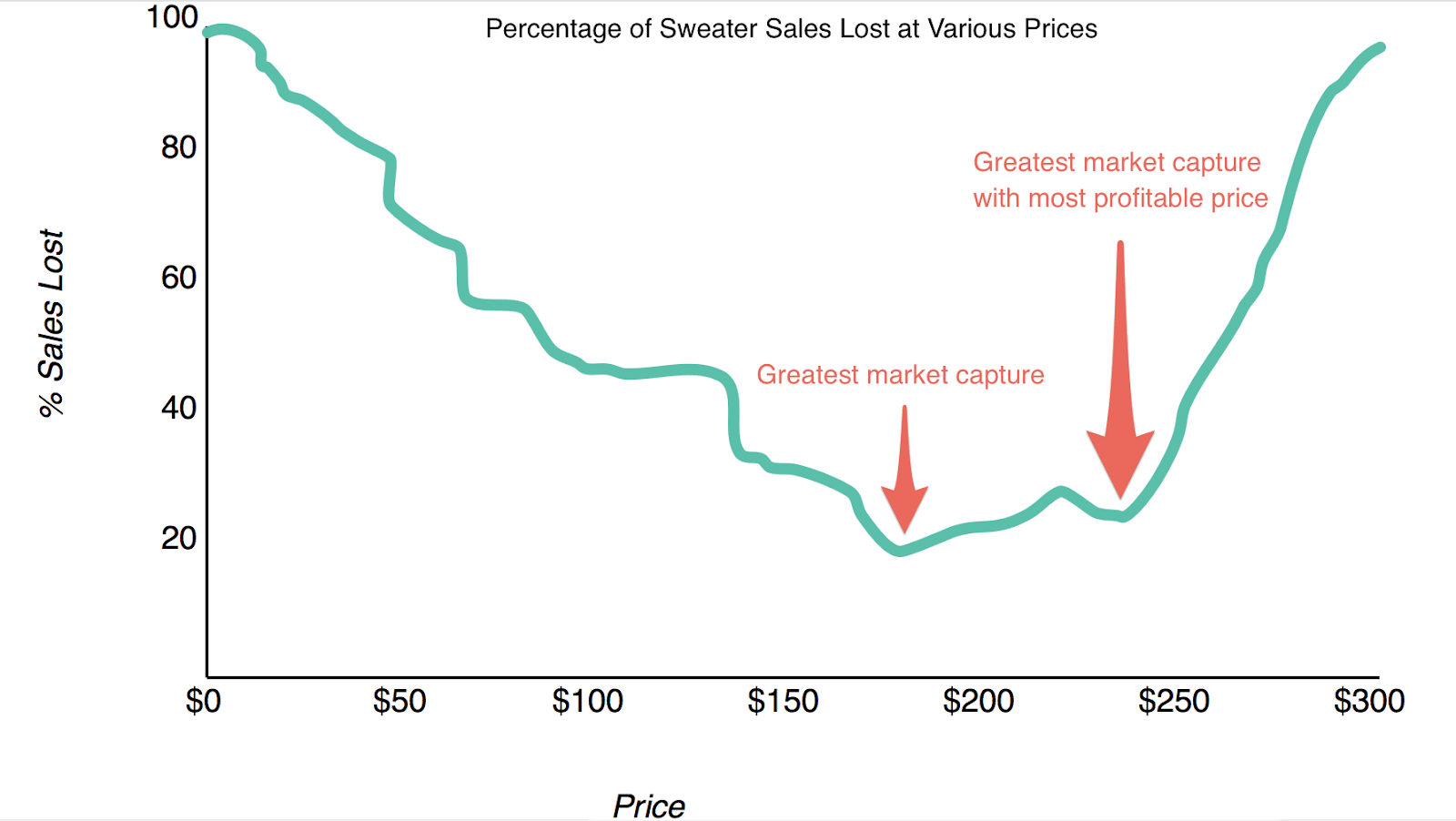


At about $175, you only lose 20% of customers. Pricing near the market average usually avoids objections and helps you compete on other things, like quality, shipping, or branding.
But if you price at $250, you’ll only lose about 22% of the market—and make an extra $75 in profit. The reason is that customers have expected “set points” for the product they buy. When you price based on the market, you make this less of an objection.
You’ll notice that prices that are too low actually lose customers as much as high prices do. Think about it—if someone offered you a brand-new sweater for 89¢, would you buy it?
Exactly.
Most mainstream stores (think any mall chain) work within this model, or something close to it. Products that are roughly the same price as similar products don’t raise objections over price.
Instead, they can become a neutral factor, which can work to your advantage.
If you have unique gear specifically for desert camping, a neutral price can bring in cost-conscious consumers that would otherwise go with generic camping equipment.
Above competition
Finally, you can set your products above the competition.
This is effective for a few niches, or if you have a well-positioned product.
Companies like Apple, Harley-Davidson, and Mercedes-Benz have unique selling points that allow them to charge more than comparable products.
Few people believe Apple’s raw materials cost many times that of PC hardware. But for Apple users, the price is justified in the other value the product provides.
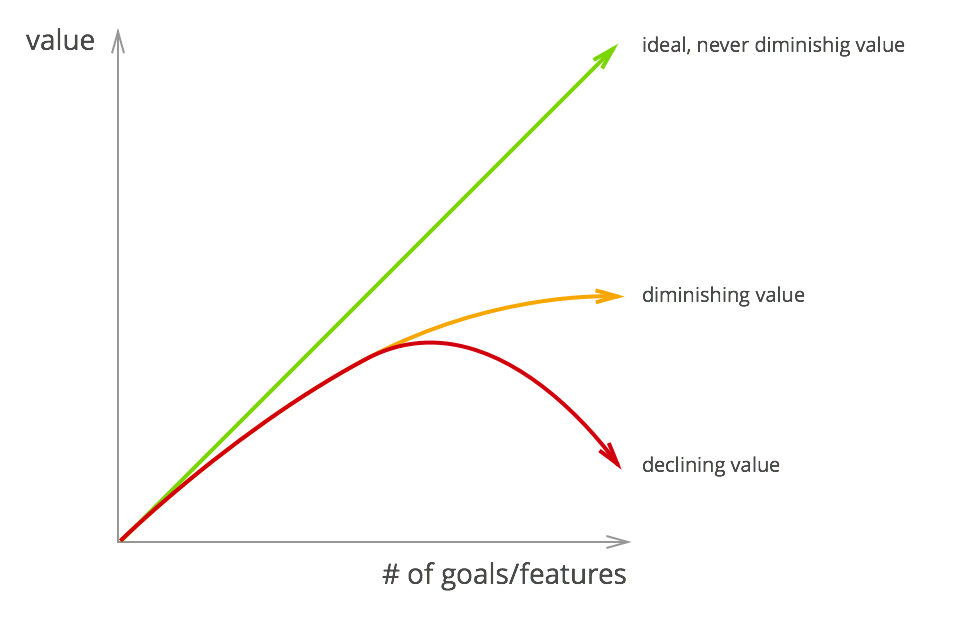


If that’s your store, you have a special advantage because a high price can actually work in your favor. In some markets, a higher price can boost sales by signaling quality—if your product and branding back it up.
What Is Keystone Pricing (And Should You Use It for Ecommerce?)
Keystone pricing is one of the simplest markup strategies in ecommerce, but it’s not right for every product.
It means setting your retail price at double your wholesale cost. So if you buy wrist watches from a supplier at $20 each, you’d price them at $40. It’s a quick way to build in healthy margins and simplify your pricing decisions.
The 100% markup usually gives you enough room to cover costs, make a profit, and keep your store running smoothly.
When you’re just starting out, your business has higher per-product costs. You’re spreading things like website expenses, research, and inventory over a smaller number of sales. That’s why each product needs to carry more of the load. Keystone pricing gives you a buffer during this phase.
As long as your price isn’t far above what the market expects—or you offer a clear differentiator—you’ll be in good shape.
That said, keystone pricing doesn’t work everywhere. In industries like electronics or tech accessories, where pricing is super competitive, a 100% markup may not be realistic. Other categories, like fashion, often use keystone pricing—though there are exceptions, like athletic shoes.
Why You Shouldn’t Price Similar Products the Same
It might be tempting to price similar items at the same rate in your store.
If you sell video equipment, for example, it might be a good idea to price all the same types of cameras at the same price. Research shows that when products are priced too similarly, it can confuse buyers and lead to decision paralysis.
Similar prices can confuse purchasing decisions.
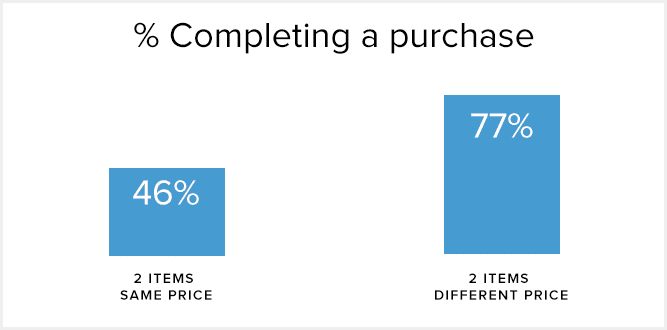


Adding a higher price to a budget product – if paired with better packaging or a bonus – can actually increase its appeal.
Targeted groups will still want to buy your items as long as you keep it slightly different from the competition. Pricing experiment can help you charge effectively and keep customers coming back.
Test and Learn: How to Optimize Your Price Over Time
Pricing isn’t a one-and-done decision. The best way to find the right number is to test, measure, and repeat.
Pricing is one of the most efficient ways to boost conversion rates. It can help you optimize your e-commerce enterprise and get the most out of your store.
(And it’s not only low prices that can help. Sometimes a higher price can actually sell more since it makes your product appear more valuable.)
Running pricing experiments, or trying a model out for a while, can help you learn a lot about what works in your niche. The goal is a pricing model that maximizes both conversion rates and profit margins.
Analyzing results can also make a big difference in how your pricing structure evolves over time. For example, knowing what works and what doesn’t can make all the difference with your pricing tweaks.
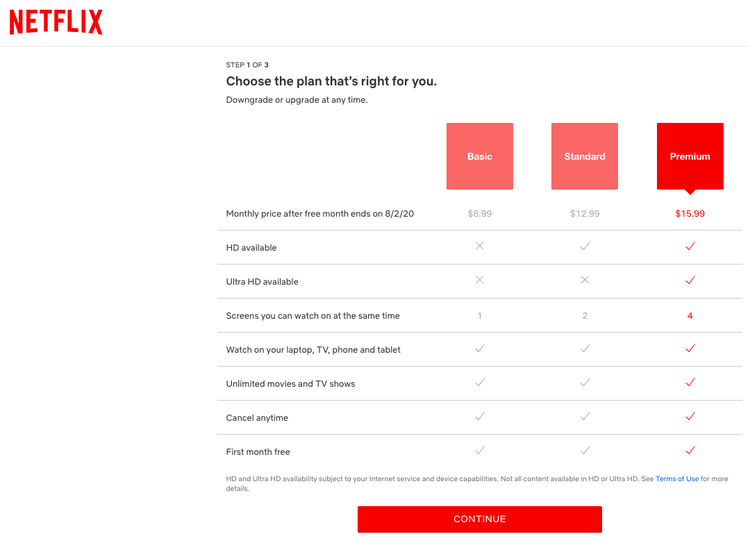


The most important obstacle to overcome is knowing your position in the market. Once you are able to clearly see where your prices stand compared to the competition, it is only a matter of time before you will find the absolute optimum scheme for your eCommerce store.
Pricing is one of the biggest considerations for any online shopper that determines whether they can buy a product online or not.
After you have a system that is getting results, you will be able to test out new marketing strategies or systems to further build growth.
The danger of developing a pricing strategy from scratch is that you can either put too high or too low and lose out on sales.
A high price can drive away customers, but a low price can make your product seem cheap and can decimate your profits.
Keep It Simple: Start With a Smart, Safe Price
Pricing doesn’t have to be difficult. If you’re spending more than a few hours figuring out your pricing, that’s the time that could be better spent testing different prices with data.
Start with a figure that makes sense for your business, costs, and how you define target customers. Then move from there to creating a basic figure that works.
Over time, you can adjust and test to see if that’s the best price for you. If sales are slow, test raising or lowering the price, you might be surprised by what works.
Sometimes a price that’s too low can make the product seem cheap, but a higher price will make it seem more premium.
If you’re able to, consider using a nine at the end of the price. There’s a reason product usually cost $14.99 rather than $15.00—the price looks more like fourteen dollars than fifteen.
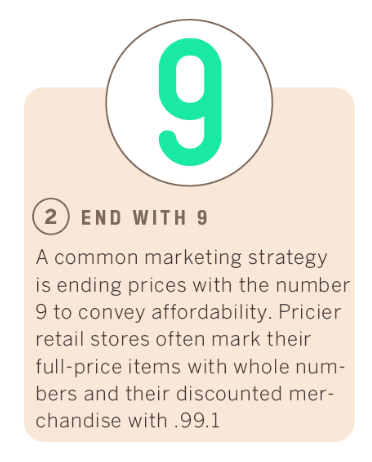


For pricier products, you can continue this same strategy by charging $49, $99, or $999 dollars.
Once you have a basic idea, run it through these questions:
- Will I cover my costs? This includes product development, transportation, overhead and advertising costs. Utility bills associated with running your business must also be factored in along with telephone and internet expenses.
- Will I break even after marketing? Determine the break-even point of your business after all the ancillary expenses and marketing strategies. A break-even point is understanding the total number of sales that a business has to make before getting into a net profit zone.
- How much wiggle room do I have? To stay competitive you may change your pricing model many times over. Make sure you know what your margins are and how much of a markup percentage you can offer. Looking at MSRP can give you a good idea of how to price well.



Pricing Psychology: Small Tweaks, Big Impact
Small pricing choices can have a major effect on perception. Ending your price in .99 instead of .00 makes it feel cheaper.
Offering “free” shipping, by building it into the product price, can reduce friction and increase conversions.
And positioning a premium version next to a mid-range option can help boost the mid-tier sales.
These tactics don’t cost anything to test, but they can meaningfully shift buying behavior.
Conclusion: Nail Your Ecommerce Pricing Strategy, Grow Smarter
Smart Ecommerce pricing isn’t about being the cheapest. It’s about finding the sweet spot between value and growth.
There are a lot of ways to price your product! Here’s how to win the eCommerce pricing game.
First, cover your costs. Get a good understanding of your operating, overhead, and marketing expenses. If you don’t cover your costs, your store will be a losing game from day one.
Next, know your place in the market and how to position your brand. Pricing above or below the market can work, as long as you understand your strategy.
Walmart and Amazon have built huge brands with discount pricing, and Rolex and Tesla have built brands focusing on premium consumers.
Understand where you fall, and price accordingly.
Finally, stay competitive. Test pricing if you need to, and figure out what helps your profit margins and customer base the best.
And always leave room to adjust. Ecommerce rewards brands that test, learn, and adapt.
eCommerce is all about adapting and improving on a regular basis.
Constantly building your store and tweaking prices will help customers get the best out of their experience with you.


Comments